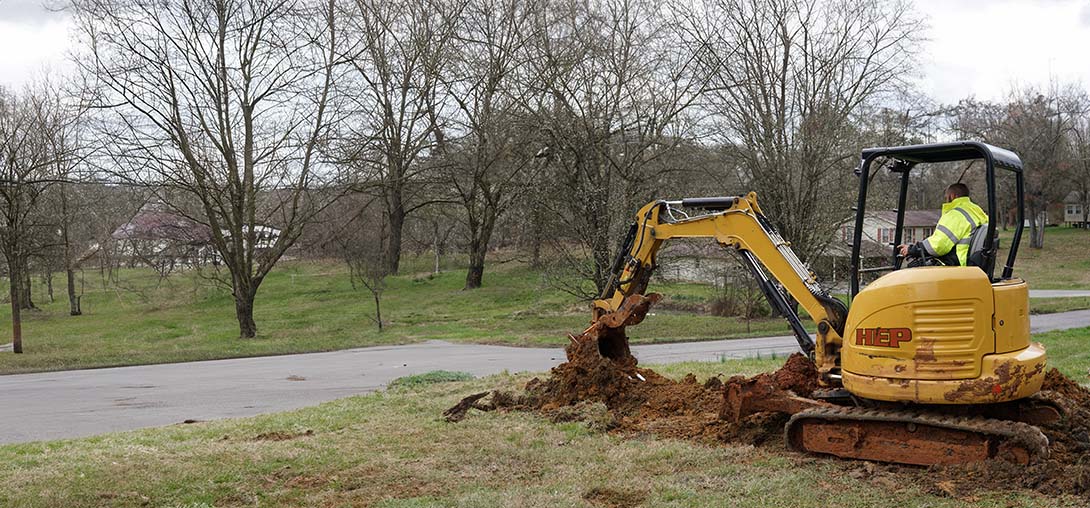- HEP
- Local Expertise

 Local Expertise
Local Expertise
Local Expertise | Main Line Issues | Plumbing | Monteagle
When water backs up in the tub or your yard starts to bubble like a spring, you need a crew that understands the terrain—not just the pipes. HEP’s Monteagle team has spent decades diagnosing everything from shifting limestone to invasive roots, giving us a hometown edge when main line issues strike. We pair that local know-how with high-resolution cameras and hydro-jetting rigs, so we can spot the problem, clear it, and reinforce the line without tearing up your favorite dogwood.
Homeowners and businesses alike count on us for same-day service, transparent pricing, and repairs that hold up through the plateau’s freeze-thaw cycles. Whether your sewer line is clay, cast iron, or modern PVC, our plumbers arrive ready to map, repair, and test—leaving behind nothing but free-flowing drains and peace of mind.
FAQs
What warning signs indicate I might have a main sewer line problem at my Monteagle property?
Typical red flags include multiple fixtures draining slowly at the same time, gurgling noises coming from toilets or tub drains, water backing up around floor drains, and foul sewer odors inside or in the yard. Because Monteagle’s clay-rich soils promote heavy tree growth, root intrusion is another common cause, so unexplained wet or sunken patches in the lawn can also point to a damaged main line. If you notice any combination of these symptoms, it’s wise to call a licensed plumber promptly to avoid a complete backup or property damage.
How quickly can your Monteagle plumbing team respond to a main line emergency?
We provide true 24/7 emergency service across Marion, Grundy, and Franklin counties, with a dedicated crew based right here in Monteagle. In most cases we arrive within 60 minutes of your call—day or night—because a blocked or ruptured main line can’t wait. Our service vehicles are fully stocked with cable machines, hydro-jetters, inspection cameras, and pipe-patching materials so we can diagnose and often begin repairs on the first visit.
What diagnostic methods do you use to locate main line blockages or breaks?
After an initial visual inspection, we typically perform a video camera inspection by inserting a waterproof camera through a clean-out to pinpoint the exact location and nature of the problem—roots, collapsed pipe, grease buildup, or foreign objects. We also use electronic locators above ground to mark the line’s route and depth, which is useful because Monteagle’s hilly terrain can create unexpected pipe runs. For suspected leaks, we may add sonar leak detection or smoke testing. Accurate diagnostics mean we open the ground only where truly necessary, saving time, money, and yard disruption.
Are trenchless main line repairs available in Monteagle, and are they right for my property?
Yes. When soil stability and pipe condition allow, we offer trenchless options such as pipe bursting and cured-in-place pipe (CIPP) lining. These methods require only two small access holes instead of a full trench, preserving established landscaping and driveways—a big advantage on Monteagle’s rocky slopes. Trenchless is ideal for pipes 2"–8" in diameter that are structurally sound enough to accept a liner or can be burst and replaced. During our camera inspection we evaluate pipe material, offset joints, and surrounding utilities to confirm eligibility and provide a side-by-side cost comparison with traditional excavation.
What factors influence the cost of repairing or replacing a main sewer line in Monteagle?
Costs vary based on pipe length and depth, type of material (cast iron, clay, PVC), accessibility, extent of damage, and repair method (excavation vs. trenchless). Rocky subsoil common on the Cumberland Plateau can add excavation time, while proximity to mature trees often means extra root removal or liner reinforcement. Permit fees set by the City of Monteagle and Grundy County utility districts must also be considered. After a camera inspection we supply a detailed, fixed-price quote that includes labor, materials, permits, disposal, and site restoration so there are no surprises.
How can I prevent future main line issues after repairs are completed?
1. Schedule a professional camera inspection every 2–3 years to catch early warning signs. 2. Avoid flushing wipes (even “flushable” ones), feminine products, or large quantities of paper; stick to human waste and toilet paper only. 3. Keep kitchen grease, coffee grounds, and food scraps out of drains—use a sink strainer and wipe pans with a paper towel before washing. 4. If you have large trees such as oaks or maples within 10 feet of the sewer path, consider a yearly root-control treatment. 5. Install a backwater valve to protect against heavy storm surges that occasionally affect Monteagle. 6. Maintain proper grading and gutter downspout placement so excess surface water doesn’t saturate the soil around the pipe.